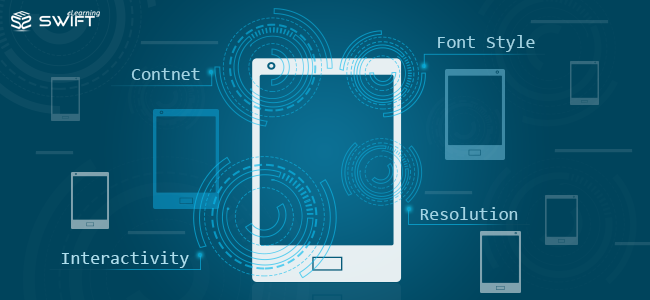Mobile Learning Courses Must Be Designed Meticulously
The Emergence of Mlearning
The influx of personal mobile gadgets like smartphones, iPads, and tablets, as well as the emergence of compatible operating systems such as Android, iOS, Windows Phone, BlackBerry, Firefox OS, etc has influenced the e-Learning field considerably. As a result, Mlearning has become a reality in our time. Of late, ‘desktops’ are mainly meant for ‘in-office’ purposes. Moreover, such small gadgets are easy to carry and will also facilitate easy web surfing while on the go. The majority of the present-day population prefers the handiness and compactness of cell phones and tablets over the immobility of desktops. Besides, the major search engine ‘Google’ has already announced their preference for mobile-friendly websites. This move is exactly in line with the prevailing penchant of the modern internet users. If instructional designers neglect these practically observable facts and create e-Learning courses that are functional only on desktops, for sure, the created courses will fail to attract the attention of customers.
Points to Reckon While Developing Mobile Learning Courses
Designers will have to take double care while developing mobile learning courses. The content must be presented in an ‘easy flow’ manner; in short, the process of learning must not become a backbreaking task to the program participants. In many of the cases, e-Learning participants may be checking the modules as a reference, or as a guiding text while attending a specific job. In some instances they may be glancing through the content while performing other tasks. The significant matter is that, during all these occasions they will be using smartphones and tablets for surfing. Hence, the Mlearning lessons and the connected illustrations must become completely mobile-friendly and easy to comprehend.
There are some basic points which the instructional designers must keep in mind while creating mobile learning courses. Though the task of designing Mlearning courses is technical by nature, designers must try to blend the process with actuality. Making e-learning courses ‘mobile-friendly’ means, making them detectable in the small screens of mobile phones and tabs. The site must give a good navigation experience to the end-users. For making this possible, instructional designers should make note of certain pragmatic points.
- Introducing easy navigable keys is a significant point. Ensuring the visibility of navigation keys is yet another crucial matter.
- Incorporating handy features like the ‘return to’ button will enable the user to go back to the desired pages quickly.
- Fixing ’screen IDs will help the course participants to clearly comprehend the stage in which he or she is positioned.
- The navigation buttons must bear the label for which it is intended.
- Don’t give undue stress to the subject matter, aspects, or to the overall operative methods. The matter should reach the learner in a straightforward and organized manner.
- All related topics must be arranged connectively. This will give continuity to the subject discussed.
- The elearning content should be designed in a meticulous way so that the courses become well-matched to the screen size of mobiles.
- Due to the small screen size, error possibility while clicking the text and links is more in smartphones and tabs; Mlearning course designers must remember this vital point while designing the course.
Our Services: Custom eLearning Solutions Development, Elearning Translation Services, Learning Management System


Leave a Reply
Want to join the discussion?Feel free to contribute!